Thinking About a Hot Tub? Read This First (A Pro’s Unfiltered Advice)
So, you’re getting a hot tub. Awesome! But before you start dreaming of starlit soaks, we need to have a little chat. In all my years installing and servicing these things, I’ve seen it all. I’m talking about tubs perched on sagging decks, powered by flimsy extension cords, and filled with water that looks like a swamp. I’ve also seen the flip side: a perfectly installed spa that brings a family joy for years without a single headache.
In this article
The difference? It always, ALWAYS comes down to the prep work. A hot tub isn’t just a big bathtub you plug in; it’s a small body of water with serious weight, high-voltage electricity, and its own little ecosystem. Getting the setup right from the get-go is the secret to avoiding costly repairs and major frustration. Let’s walk through this the right way, focusing on what truly matters: the foundation, the power, and the water.
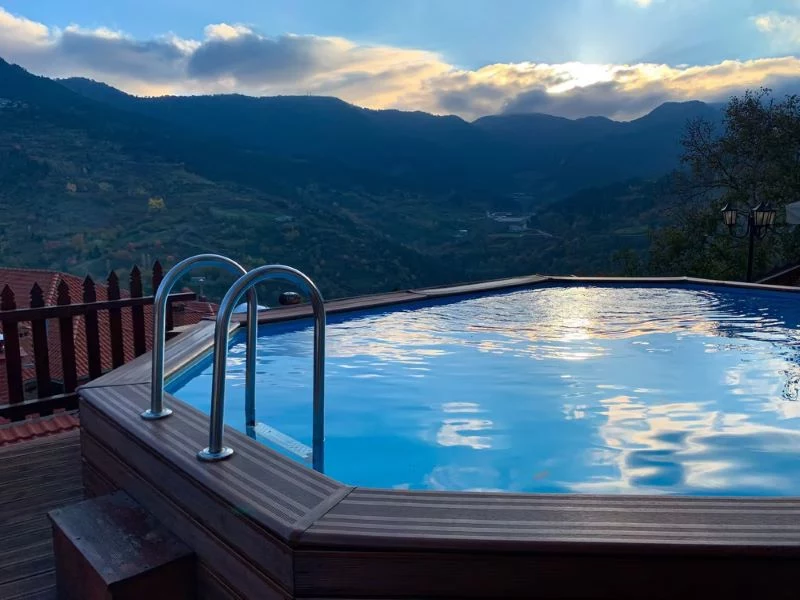
Part 1: The Foundation – It’s All About the Base
The first thing everyone gets wrong is underestimating the weight. Seriously. Your average hot tub holds around 400 gallons of water. At 8.34 pounds per gallon, that’s over 3,300 pounds. Now, add the tub itself (another 600-900 pounds) and a few friends, and you’re easily pushing 5,000 pounds. That’s a whole SUV parked in one spot on your property, 24/7.
When you put that kind of load on an unprepared surface, bad things happen. Decks groan, patio stones buckle, and the ground settles. An unlevel tub puts a ton of stress on the acrylic shell, which can twist the frame and eventually cause cracks. And trust me, a warranty claim for a cracked shell gets denied in a heartbeat if they find out it was on a bad base.
Choosing Your Foundation: The Pro’s Breakdown
You’ve got a few solid choices for your hot tub’s home. Your decision will likely come down to budget, location, and how much work you want to do yourself.
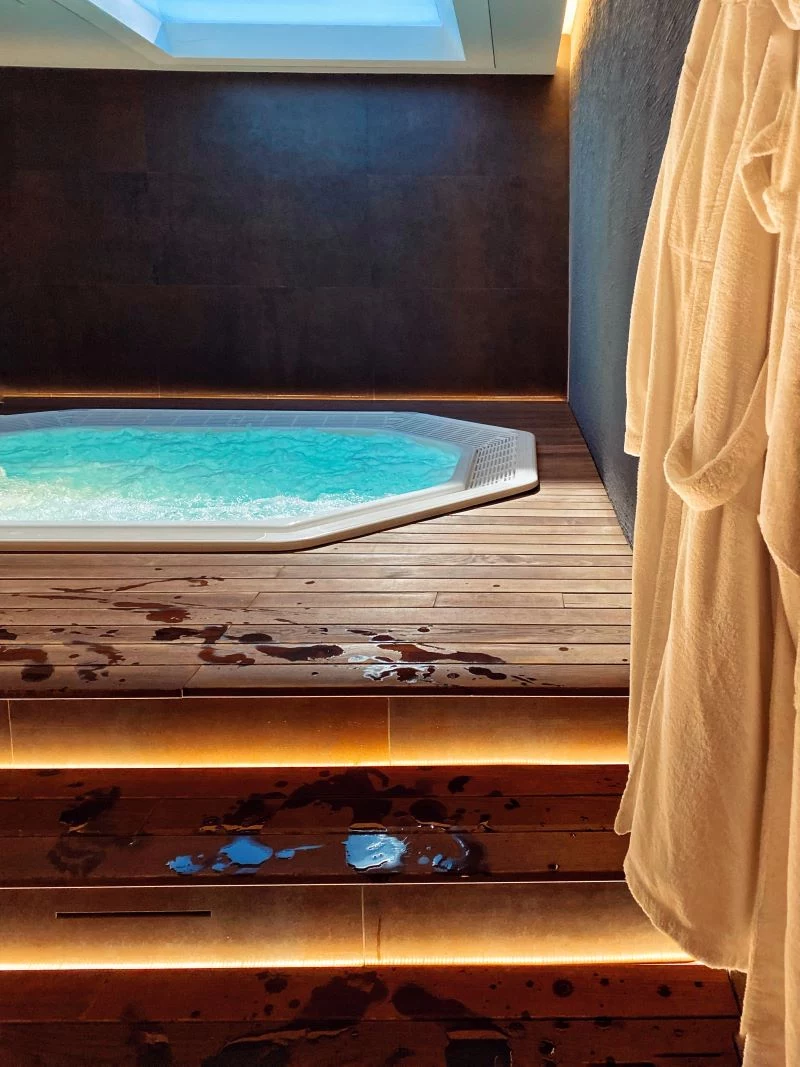
The Gold Standard: A Reinforced Concrete Pad
Let’s be clear: this is the best option, period. It’s what we recommend for the vast majority of installations. A proper pad needs to be at least 4 inches thick and reinforced with a steel rebar grid. That grid is non-negotiable; it’s what stops the concrete from cracking under the tub’s weight. The pad should be perfectly level and just a bit bigger than the tub itself.
Heads up! When you hire a contractor, don’t just say you need a “patio slab.” Tell them it’s for a hot tub that will weigh over 5,000 pounds. This tells them to use the right mix and reinforcement. A standard sidewalk slab won’t cut it. Expect this to cost anywhere from $800 to $2,000, depending on size and access. And a critical point: you need to let that concrete cure. Don’t you dare put a tub on it for at least 7 days, though 28 days is what the pros recommend for it to reach full strength.
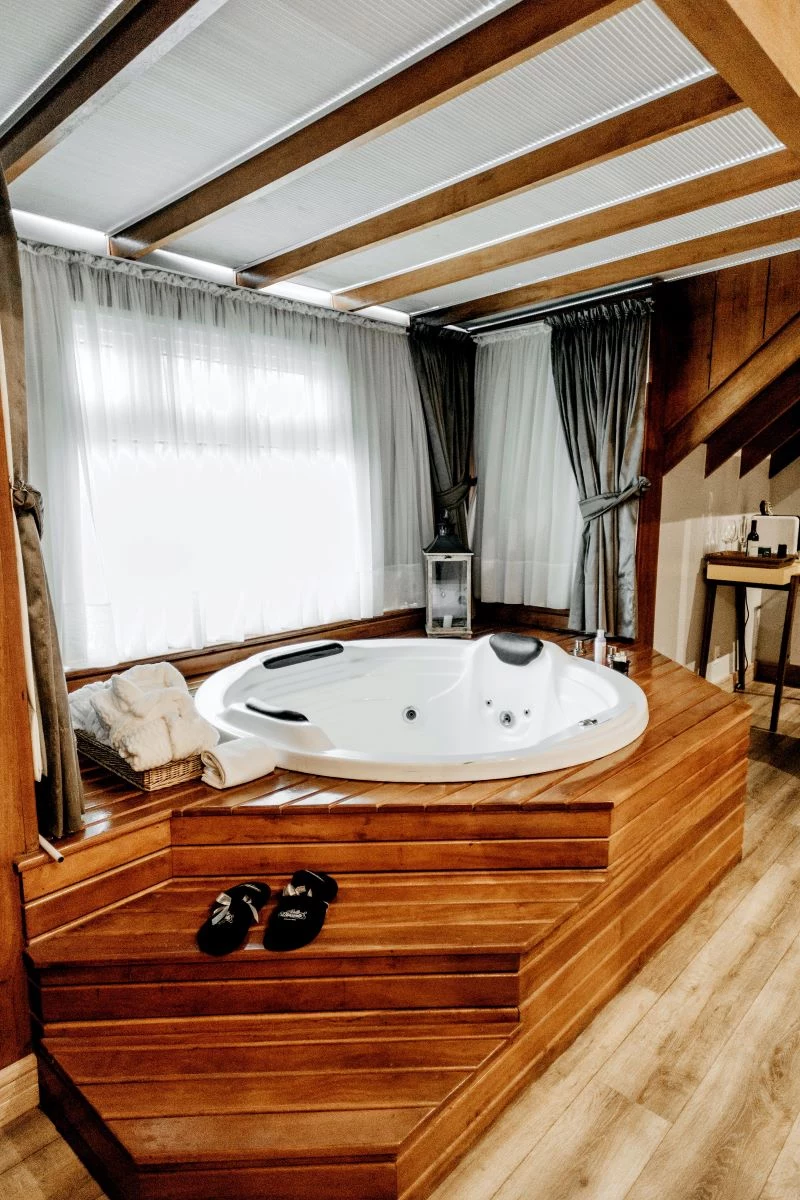
The DIY-Friendly Choice: Pre-Fabricated Spa Pads
These interlocking plastic pads (you’ll see brands like EZ Pad or Handi-Pad) are a great alternative if pouring concrete isn’t in the cards. But you can’t just toss them on the grass. The prep work is what makes this option successful.
Here’s a mini-tutorial for getting it right:
- First, dig out about 4 inches of sod and dirt in the area where the pad will go.
- Next, fill it with about 3 inches of crushed stone. Now for the important part: you have to compact it until it’s solid. Rent a hand tamper from a hardware store for about $15—it’s worth every penny.
- Finally, add about an inch of sand on top and use a long, straight board to level it perfectly. Then you can lay down the pads. It’s a bit of a workout, but it creates a super-stable base.
The Complicated One: A Reinforced Deck
Putting a hot tub on a deck is possible, but it requires serious planning. Please, I’m begging you, do not assume your deck can handle it. A typical deck is built for about 40-50 pounds per square foot (psf). A hot tub exerts more like 100-150 psf. It’s one of the most dangerous mistakes you can make.
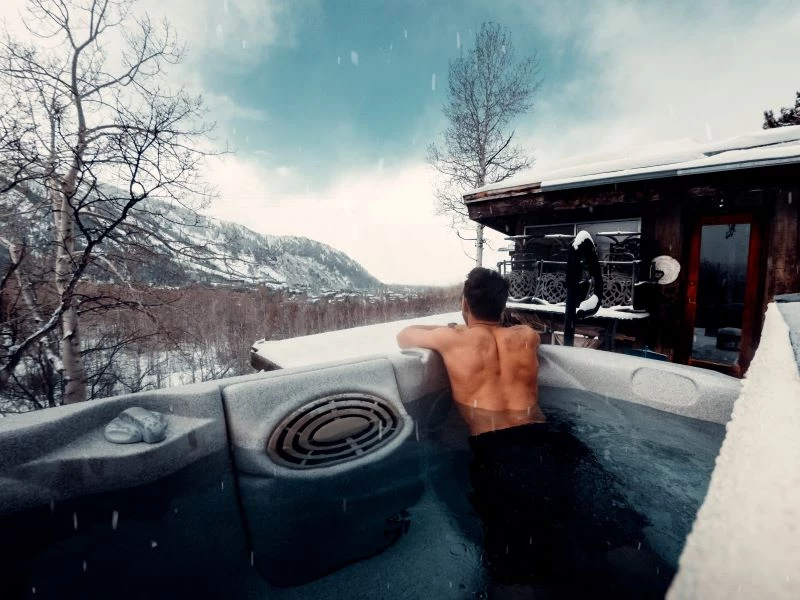
I once got a call about a tub making a “weird noise.” The deck had sagged three inches. We had to drain the tub immediately, and they had to pay for a crane to lift it off, a contractor to rebuild the deck with extra supports, and the crane to put it back. A quick consultation with a structural engineer would have saved them thousands.
Don’t Forget Access!
Once you’ve picked the spot, think about future-you. Leave at least 2 to 3 feet of clear space around the side with the equipment panel. If you build your deck right up against it, the first time a pump fails, a carpenter will be cutting a big, ugly hole in your beautiful deck. Also, consider the path from your house. A long, icy walk in a bathrobe in winter gets old fast.
Part 2: Power and Safety (This is Non-Negotiable)
Okay, water and electricity. This is where you absolutely cannot cut corners. While some small “plug-and-play” tubs exist, most require a 240-volt hardwired connection. This is not a DIY project unless you are a licensed electrician.
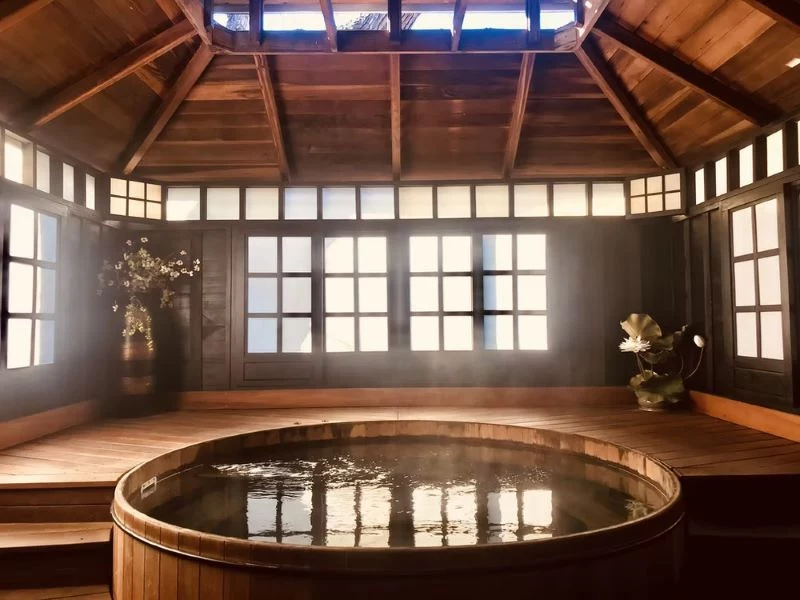
Every single hot tub must be protected by a Ground Fault Circuit Interrupter (GFCI). This device is a lifesaver—literally. It constantly monitors the flow of electricity, and if it detects even the tiniest leak (like electricity going where it shouldn’t), it shuts the power off instantly. I’ve seen people bypass a tripping GFCI. That’s like cutting the brake lines on your car because the pedal feels squishy. Don’t do it.
Hiring a Pro: What to Expect and What to Ask
You’ll need a licensed electrician to run a dedicated 50-amp or 60-amp circuit from your main panel to a manual disconnect box near the tub. This box has to be in sight of the tub but at least 5 feet away. From my experience, this job typically costs between $500 and $1,500 and takes an electrician about 3 to 5 hours.
To make sure you hire the right person, ask these questions:
- “Have you installed a dedicated hot tub circuit with a GFCI disconnect before?”
- “Are you familiar with our local code requirements for placement and bonding?”
If they hesitate on either question, find someone else. Seriously. The cost of an electrician is a mandatory part of buying a hot tub. Trying to save money here can lead to melted wires, a fried control board (an $800+ fix), or even a fire.
Part 3: Water Care – Your Inner Chemist
This is where new owners get frustrated, but it’s simpler than it looks. You’re just trying to keep the water safe and clear while protecting the tub’s expensive equipment. There are four main things to balance, and the order matters.
Always adjust in this order:
- Total Alkalinity (TA): This is the anchor for your pH. Get this right first. Aim for 80-120 ppm.
- pH Level: This measures acidity. Aim for 7.4-7.6. If it’s too low, it can corrode your equipment. Too high, and you get cloudy water.
- Calcium Hardness (CH): This prevents your water from eating away at the tub’s components. Aim for 150-250 ppm.
- Sanitizer (Chlorine or Bromine): This is what kills the germs. Chlorine is cheap and fast (1-3 ppm), while Bromine is more stable in hot water and gentler on skin but costs more (3-5 ppm).
Quick Tip: If you’re on well water, do yourself a huge favor. Buy a screw-on hose filter for about $20 from Amazon or a pool store. It attaches to your garden hose and grabs minerals like iron and copper before they get into your tub and cause ugly stains on your brand-new shell.
First-Time Fill-Up: A Simple Checklist
Okay, the tub is in place and filled with water. Now what? Don’t panic. Here’s a simple startup routine to get you going:
- Filter the Fill: Use that hose filter we just talked about as you fill the tub.
- Add a Sequestrant: Even with a filter, add a dose of metal sequestrant or stain & scale control. It’s cheap insurance.
- Heat It Up: Put the cover on and let the tub heat to your desired temperature. This can take anywhere from 8 to 24 hours.
- Test and Balance: Once it’s hot, use a quality test kit (not the cheapest strips you can find) and balance your water in the order I mentioned above: TA first, then pH, then Calcium Hardness.
- Shock the Water: Add a non-chlorine shock or an extra dose of your sanitizer to burn off any initial contaminants. Wait for the sanitizer level to come back down to the normal range.
- You’re Ready! Once the water is balanced and the sanitizer is in the proper range, it’s time to enjoy your first soak.
Your Ongoing Maintenance Routine
The key to clear water is consistency. Rinse your filters with a hose once a week. Drain and refill the tub every 3-4 months. And a little-known trick: that built-in drain spigot can take forever. Go to a hardware store and buy a cheap submersible sump pump for about $60. It’ll empty your tub in 20 minutes instead of two hours. You’re welcome.
Part 4: The Real Cost of Ownership
The price tag on the tub is just the beginning. A good dealer will be upfront about this. Here’s what you should budget for.
New Owner’s Shopping List
Right off the bat, you’re going to need a few things. Here’s a realistic list with ballpark prices:
- Good Quality Test Kit: $25 (A Taylor liquid kit is best)
- Core Chemicals: About $15 each for pH Up, pH Down, and Alkalinity Increaser.
- Sanitizer: A large container of chlorine or bromine will be about $40-$60.
- Two Sets of Filters: $80 (so you can swap a clean one in while the other is soaking)
- A Cover Lift: Around $200, but it saves your back and your expensive cover.
All in, plan for an initial chemical and accessory budget of $200 to $400 for the first year.
Your Monthly Electric Bill
Your electricity bill is going to go up. How much depends on your climate and the tub’s insulation. But here’s a surprising fact: the number one energy waster on a hot tub is a cheap, waterlogged cover. A bad cover can easily add $30 to $50 a month to your bill. A quality, thick cover is your best friend for energy efficiency. Plan on replacing it every 3-5 years for about $500 or more. It’s a necessary investment.
Part 5: Check the Local Rules FIRST!
Before you even swipe your credit card, please call your local building department. Many cities have specific rules about hot tubs.
They’ll tell you about:
- Setbacks: How far the tub must be from your property lines.
- Safety Barriers: This is a big one. Many areas require a 4-foot fence with a self-latching gate to prevent children from getting in. This can be a huge, unexpected cost if your yard isn’t already fenced. Sometimes a special locking safety cover is an approved alternative, but you have to confirm this with your local officials.
- Permits: The electrical work will almost certainly require a permit and an inspection.
I had a client who got their tub all set up on a new patio, only to have a city inspector drive by and slap them with a stop-work order. It was two feet too close to the property line. They had to pay my crew to drain it and move the whole thing. A five-minute phone call would have saved them a grand.
Final Thoughts
A hot tub is an incredible addition to a home, but that long-term enjoyment is built on a foundation of smart planning. Invest in the base, hire a pro for the power, and take 15 minutes a week to care for your water. When you do it right, you can sit back, hit the jets, and relax with the peace of mind that comes from a job well done.
Inspirational Gallery
Salt Water System: Uses a generator to convert salt into natural chlorine. It feels softer on the skin and has less odor. Requires a higher initial investment but lower ongoing chemical costs.
Traditional Chlorine/Bromine: Manually added granules or tablets. It’s a lower-cost entry point and highly effective, but can be harsher on skin and swimsuits, and requires more frequent testing and dosing.
For sensitive skin, the salt system, like Hot Spring’s FreshWater® Salt System, is often the preferred choice.
An average 8-foot spa cover can weigh 75 pounds dry and over 125 pounds when waterlogged.
This is why a cover lifter isn’t a luxury; it’s a necessity. Without one, you risk damaging the expensive cover, straining your back, or simply not using your hot tub because of the hassle. A hydraulic-assist lifter like the CoverMate I makes opening the spa a one-handed, ten-second task, ensuring your investment is both protected and easy to enjoy.
Where’s the best spot for access and privacy?
Think about the path from your house to the tub, especially on a cold winter night. You want it short and well-lit. Also, consider the prevailing winds, which can rapidly cool the water when the cover is off. Position the tub where it’s sheltered by a wall, fence, or landscaping. Finally, check sightlines from neighbors’ windows to ensure your relaxing soak remains a private affair.
- Reduced energy bills month after month.
- Water that stays hotter for longer between uses.
- A quieter, more peaceful soaking experience.
The secret? Full-foam insulation. While cheaper tubs just have insulation on the shell, premium models from brands like Sundance® or Caldera® Spas inject high-density foam throughout the entire cabinet structure. This method dramatically minimizes heat loss and equipment vibration, paying for itself over the life of the spa.
Your hot tub’s shell material directly impacts its longevity and feel. Most quality spas use a multi-layer, vacuum-formed acrylic, prized for its durability, high gloss, and resistance to UV rays and chemical damage. Cheaper, rotationally-molded tubs are made from a single piece of polyethylene plastic; they are lightweight and very durable against impact but lack the premium finish and color depth of acrylic. For the ultimate in luxury, some high-end custom spas might feature stainless steel or even tile.
Don’t forget the delivery path: Your new spa will arrive on its side, on a dolly. Before delivery day, measure the entire path from the street to the final location. Check the width of gates, clearances under eaves, and any tight corners. A 90-degree turn from a narrow side yard can stop a delivery cold. Clear any obstacles like air conditioning units, planters, or low-hanging branches in advance.
Hydrotherapy, the use of water for pain relief and treatment, has been practiced for centuries. Modern studies show that immersion in hot water can significantly decrease stress hormones like cortisol and improve sleep quality.
Once the technical setup is done, focus on integrating the spa into your landscape. Here are a few ideas to make it feel like a natural retreat:
- Build multi-level decking around it to create seating and easy entry.
- Use large flagstones and gravel to create a zen-like path to the tub.
- Plant tall ornamental grasses or bamboo (in containers to control spread) for a natural privacy screen.
- Incorporate low-voltage landscape lighting to illuminate the path and create a magical nighttime ambiance.
Important point: Check your home’s electrical panel before you buy the tub. A modern 240V hot tub requires a dedicated 50 or 60-amp GFCI-protected circuit. Many older homes have 100-amp main service panels that may not have the capacity for this extra load, especially with other high-draw appliances. An electrician can confirm if your panel is sufficient or if you’ll need a costly service upgrade, a budget factor you can’t ignore.










